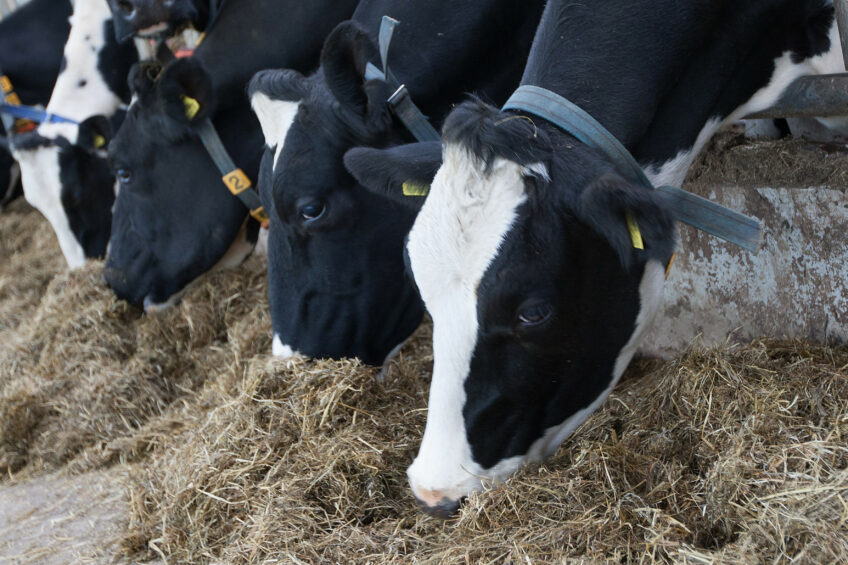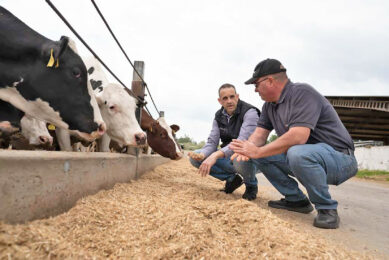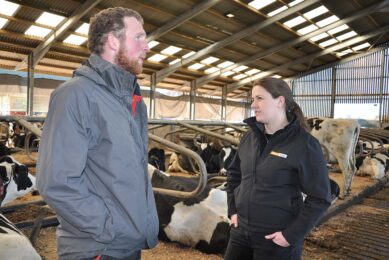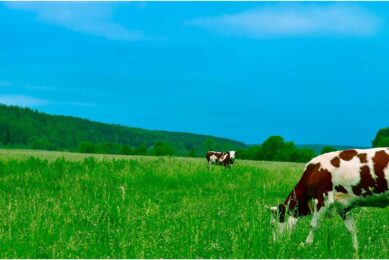How feeding affects cow health

Numerous factors influence immune function, including genetics, hormones and oxidative stress. However, one of the most influential factors regarding immune function is nutrition.
The ability of a cow to remain healthy depends on many factors, not least of which is its immune system. Competent immune function is critical to dairy cow performance and welfare. The first stage of the immune system is the skin. Cuts or abrasions to the skin can allow entry of pathogens into the body. This stimulates the next step in the defence process, the innate (or “non-specific”) response, which causes inflammation. Following the initial inflammatory phase, a second, more specific, process occurs. Antibodies are produced as part of this response; this is the basis of vaccination. This system also possesses ‘memory,’ in which memory cells from a previous infection remain in circulation. If the same pathogen is encountered a second time, the response is more rapid and of greater magnitude.
Feeding and immune function
One of the most influential factors regarding immune function is nutrition. Many data exist to demonstrate the adverse effect of malnutrition on immune function in mammals. The transition period poses the greatest risk to immune function due to the large amount of physiological stress the cow undergoes. During the close-up period, cows can experience suppressed immune function (Sordillo et al., 2009). Both deficiencies and excesses of various nutrients can result in impaired immune function, so careful attention must be paid to transition cow diets.

Minimise negative energy balance
Minimising the negative energy balance (NEB) post-calving is an important goal for any nutritional plan. Animals with a NEB tend to have elevated levels of compounds associated with an increase in inflammatory conditions (Sordillo et al., 2009), and mobilisation of body fat to provide additional energy has detrimental effects on metabolism and on the immune system (Ingvartsen and Moyes, 2012). Minimising NEB requires a healthy and efficient rumen, which can be encouraged by feeding a balanced ration using good-quality ingredients. As the calf grows in size, dry matter intake decreases, requiring adjustments in the nutrient density of the ration. Fat is often used to increase energy density, but it must not be at the expense of ration balance. Adequate dietary-soluble carbohydrates, as well as avoidance of excess dietary protein, should be taken into account when formulating rations for these animals. That said, the cow should still be provided with optimal levels of forage to minimise the risk of digestive disturbances. Feed additives such as live yeast have been shown to improve rumen function (Desnoyers et al., 2009).
Combat oxidative stress
Oxidative stress has also been cited as a negative influence on immune function. It is well accepted that selenium (Se) is a crucial antioxidant that works in tandem with vitamin E and has a major impact on oxidative stress. Se-containing enzymes such as glutathione peroxidase scavenge compounds that enhance oxidative stress and have a vitamin-E-sparing effect. Levels of selenoenzymes are known to decrease during the very late dry period but rapidly increase again in early lactation. Selenium inadequacy is linked with adverse immune function effects, such as impaired antibody production. Adequate selenium status has a positive effect on the animal’s ability to resist infection and on fertility parameters.

Optimising Se status in cows is essential for supporting immune function. Not only the amount but also the form of Se supplied is important. It is well established that organic forms of minerals generally have higher bioavailability and retention in the body compared to their inorganic counterparts. This retention in body tissues allows the animal to build a reserve of the mineral to use in times of increased physiological stress, such as transition. As Se cannot be chelated, selenium-enriched yeast such as Sel-Plex® is often used to deliver Se in an organic form. Positive effects have been noted with feeding organic forms of other minerals, such as zinc and copper. Zinc deficiency can significantly increase susceptibility to infections. Zinc is also crucial for maintaining the integrity of the primary barrier, the skin, and cells involved in the inflammatory response require zinc for normal function and development. However, an excess of zinc has been shown to impair immune function. Copper is also crucial for immune function. It affects the second, more specific, response by the immune system; thus, copper-deficient animals often show immunosuppression.
Nutrition plays a crucial role in dairy cow health
Essentially, immune function is critical to dairy cow performance, and transition animals are at greatest risk of impaired immune function. Nutrition plays a crucial role in dairy cow health, not least through direct effects on the immune system, and rations should be formulated to enhance immunity through optimal mineral supply, as well as maximise rumen function.
Join 13,000+ subscribers
Subscribe to our newsletter to stay updated about all the need-to-know content in the dairy sector, two times a week.










